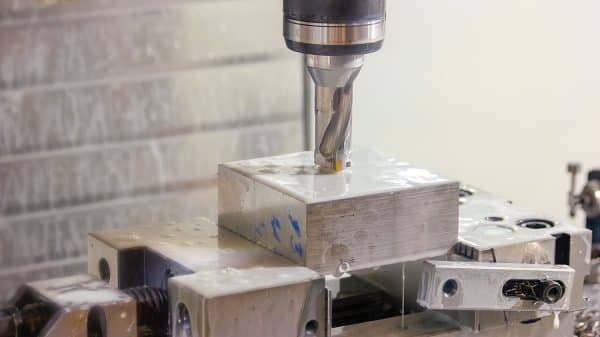In industries driven by precision machining and rigorous performance expectations, like aerospace, automotive, medical devices, and semiconductor manufacturing, ensuring components are immaculately clean is non-negotiable. That’s where well-controlled ultrasonic washing processes come in.

Today, we’re looking at how cleanliness testing supports industrial parts cleaning standards and why it’s essential in precision machining workflows.
What Is an Ultrasonic Washing Process
An ultrasonic washing process utilizes high-frequency sound waves, typically ranging from 20 to 400 kHz, to generate microscopic bubbles in a cleaning solution. These bubbles collapse, creating a scrubbing action that removes contaminants from even the tiniest cracks, holes, and intricate surfaces.
It’s a non-abrasive method that’s ideal for precision machining. Ultrasonic cleaning removes oils, greases, chips, and debris without damaging delicate surfaces. This is particularly critical when preparing components for sensitive applications, such as coating, assembly, or sterile environments.
Cleaning Standards: How Clean Is Clean Enough?
Industrial parts cleaning standards vary based on the application. Some parts require only a final clean, where up to 500 mg/m² of residue is acceptable. Others need precision-level cleaning that limits residues to less than 50 mg/m². In critical cleaning applications—such as aerospace, cleanrooms, or fluid systems- the threshold drops to 5 mg/m² or even less.
To validate these levels, industries follow frameworks like VDA 19/ISO 16232 or ISO 9001/13485. These standards rely on methods such as gravimetric analysis, wipe testing, UV checks, particle counting, and water-break testing to confirm cleanliness.
In precision machining, meeting these standards ensures parts are fully ready for their next steps, be it bonding, coating, or fitting. Even invisible contamination can interfere with performance.
Cleanliness Testing Tools and Protocols
Cleanliness testing plays a vital role in verifying that ultrasonic systems are doing their job. One method uses ultrasonic cleaning indicators, test strips with artificial soil. When they come out clean, it confirms that cavitation is working effectively.
Another tool is the foil test. A strip of aluminum foil is dipped in the tank and exposed to ultrasonic waves. A uniform pattern of tiny holes means the cavitation energy is strong and consistent.
Residual protein or oil tests are common in medical and food-grade manufacturing. Swabs or wipes are used on cleaned parts and analyzed chemically to detect trace residues.
You might also rely on visual or environmental testing. Water-break tests show whether surfaces repel or hold water evenly. Contact angle measurements and UV fluorescence help detect leftover films or oils.
Performance qualification (PQ) testing is crucial in regulated industries. It verifies that the entire cleaning system, when used as intended, consistently delivers clean parts.
Key Variables in Ultrasonic Cleaning Success
The frequency and power of the ultrasonic cleaner matter. Lower frequencies (around 25 kHz) work best on heavy dirt and oils. Higher frequencies (80 kHz and above) target fine particles and delicate surfaces.
The cleaning solution and temperature are also important. Detergents should be selected to match the contamination. The solution must be degassed before cleaning to remove trapped air bubbles that weaken cavitation. Most processes work best between 40 °C and 60 °C.
How you load the parts can make or break the process. Parts should never rest on the bottom of the tank, and they should be spaced to allow cavitation waves to reach all sides.
Finally, regular maintenance and calibration ensure everything stays within operating specs. Dirty tanks or misaligned transducers can seriously compromise cleaning performance.
Why Testing Matters in Real-World Applications
In precision machining, a clean surface ensures perfect adhesion and fit. Contaminants can throw off tolerances, affect finishes, or interfere with coatings.
In medical device manufacturing, regulatory compliance demands verifiable cleanliness. Parts must be free of all bioburden and residues.
In aerospace and automotive systems, even a microscopic particle in a fluid channel can cause failure. That’s why cleanliness testing is non-negotiable.
For semiconductor and high-tech applications, the margin for error is razor-thin. Surface impurities can lead to massive losses in yield and reliability.
Building a Reliable Cleanliness Verification Program
Start by defining your cleanliness targets. What’s acceptable residue for your application?
Validate your equipment through tests like foil strips or indicator coupons. Make sure the machine is hitting performance benchmarks.
Control your cleaning chemistry. Use the right solution and concentration for your contaminants.
Document every setting, time, temperature, solution type, and more. Consistency is key.
Keep your station clean and inspect it regularly. Debris, cloudy solution, or scaling can affect results.
Finally, conduct regular audits. Testing, tracking, and reviewing your process ensures your system stays within spec.
C. Thorrez Industries, Inc. and Ultrasonic Cleaning Excellence
At C. Thorrez Industries, Inc., precision is a priority. With a legacy in high-quality precision machining, the team understands that parts must be more than accurate—they must be contaminant-free. That’s why ultrasonic washing is a foundational step in their operations.
Whether a part is headed for final assembly, surface treatment, or laser marking, it needs to meet strict cleanliness standards first. C. Thorrez Industries ensures its ultrasonic washing process aligns with top-tier industrial parts cleaning standards, helping clients in the aerospace, automotive, and tech fields trust the parts they receive.
Don’t Leave Cleanliness to Chance
Ultrasonic washing processes offer unmatched ability to clean complex parts, but they’re only effective when paired with testing and quality control.
Whether you’re making aerospace brackets, surgical instruments, or optical components, your ultrasonic washing process should be as precise as the parts you produce. Cleanliness testing proves that what you’re doing works and helps you catch problems before they affect performance.
Build testing into your routine. Keep your process tight. And treat every part like it matters because in industries like yours, it does.
Ready to raise your cleaning standards? Partner with C. Thorrez Industries, Inc. for precision machining backed by reliable ultrasonic washing processes. Contact us today to learn more.

